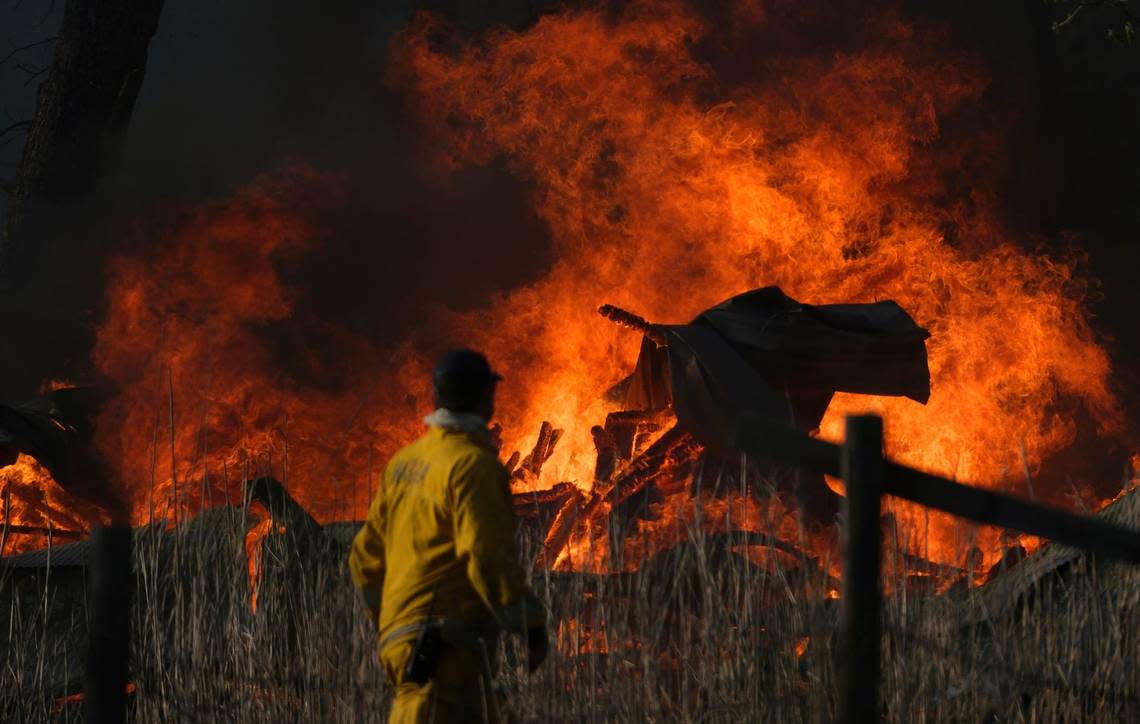It’s already wildfire season. Here’s how to protect yourself from smoke hazards | Opinion

Summer hasn’t even officially begun, but the wildfire season is already off to a scorching start, creating dangerous air quality conditions across the Midwest and elsewhere. In the last several weeks alone, Iowa, Kansas, Missouri, Minnesota, the Dakotas, Oklahoma, Nebraska and Wisconsin have had air quality alerts triggered by more than 140 wildfires burning across Alberta and British Columbia in Canada.
Like last summer, which was one for the record books for wildfires and poor air quality, people are directed to stay indoors during alerts until conditions clear. But going inside doesn’t guarantee safety from pollutants.
“Local officials often advise people to stay indoors during a smoke event,” the Environmental Protection Agency says. “However, some of the smoke from outdoors can enter homes and buildings and can also make indoor air hazardous to breathe. Because buildings vary in their design and construction, they also vary in their levels of protection against wildfire smoke.”
And both short- term and long-term exposure to indoor air pollution, as the National Institute of Environmental Health Sciences reports, “can cause a range of health issues, including respiratory diseases, heart disease, cognitive deficits and cancer.”
While communities are still at the front end of adjusting to the erosion of air quality in the summer months due to wildfire smoke, policymakers and the construction industry are rightfully focused on how to help millions of Americans stay safe in their homes and businesses during alert periods.
A handful of key best practices are emerging.
A good first step is for communities to employ effective education campaigns to explain the health dangers of wildfire smoke and provide training for local leaders. In Colorado, for example, the Department of Public Health and Environment is putting in place a statewide program to provide outreach, education and training for local community partners on how to prepare for and respond to the public health threat.
Another is for communities to install indoor air monitoring technologies that provide real-time data and feedback and to dust off air cleaning systems that might have been employed during the height of the COVID-19 pandemic. In one recent example, the Utah Department of Environmental Quality is combating wildfire toxins inside buildings by installing indoor and outdoor fine particle and carbon dioxide sensors at public schools, while also distributing air cleaners and filters to public schools, preschools and residents in targeted underserved areas.
Another key approach focuses on ensuring the most vulnerable don’t slip through the cracks. In response, some regions are developing centers equipped with specialized air filtration systems. In Montana, a region highly affected by wildfire smoke, the state is piloting a clean air shelter program in six communities for easy replication in other high-need areas.
Because wildfire season now extends well into the autumn during the school year, planners are also focused on prioritizing school buildings, youth centers and other public buildings. In one such example, the Nez Perce Tribe within Idaho is retrofitting three community centers, nine public libraries and four youth centers to withstand wildfire smoke events.
The federal government is helping to add a measure of coordination and financial support to make affected regions better equipped to weather the dangerous plumes. The EPA has begun dispensing grants to regions around the country with a demonstrated wildfire smoke risk. The grants are used to upgrade heating, ventilation and air conditioning units and weatherization necessary to protect occupants from air hazards stemming from wildfire smoke.
The 2024 U.S. wildfire season is set to worsen as above-average temperatures set in over the summer, according to the National Interagency Fire Center forecast. That means another summer and fall of plumes triggering air quality alerts in disparate regions of the country.
But by working together, local leaders and building specialists can help ensure safety for millions.
Mark Hershey is senior vice president at Armstrong World Industries, a ceiling and wall construction firm based in Lancaster, Pennsylvania. He is also a member of the board of trustees of The National Building Museum.


